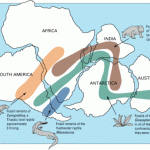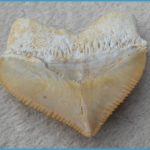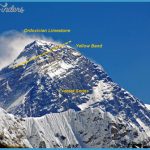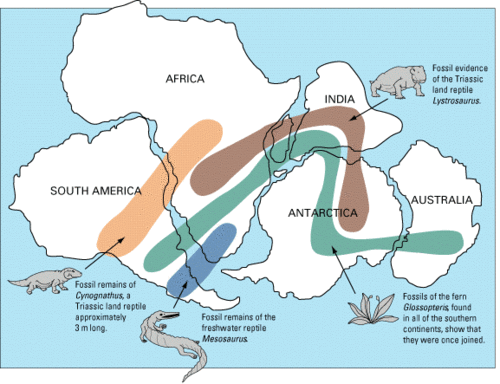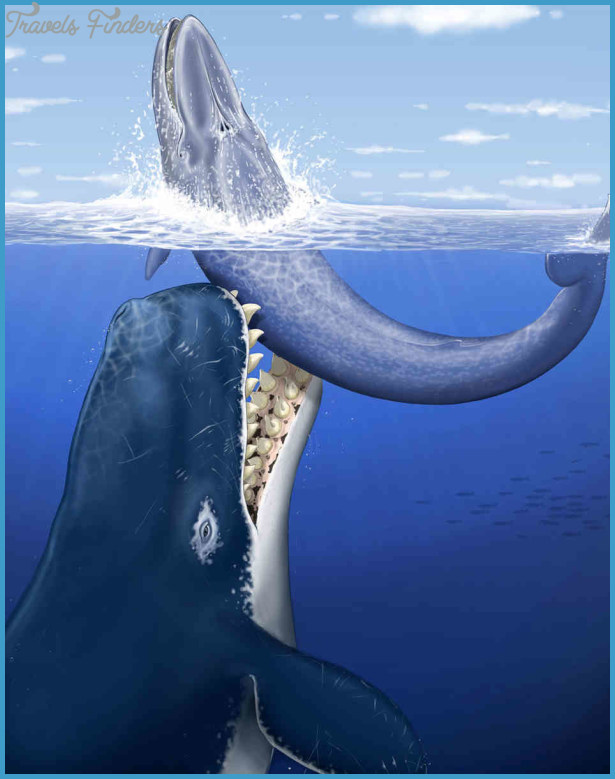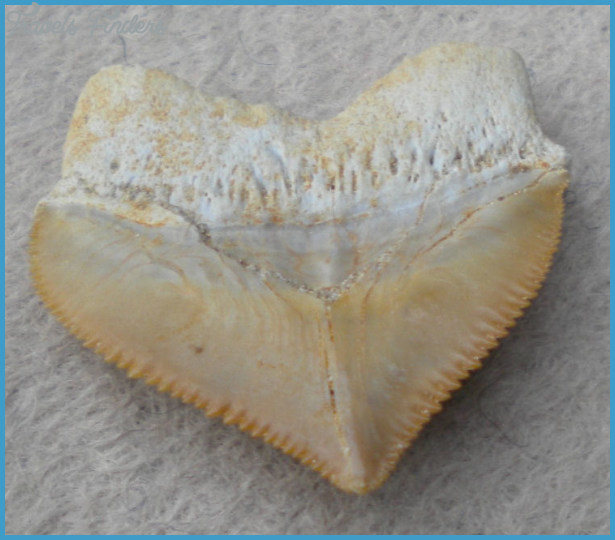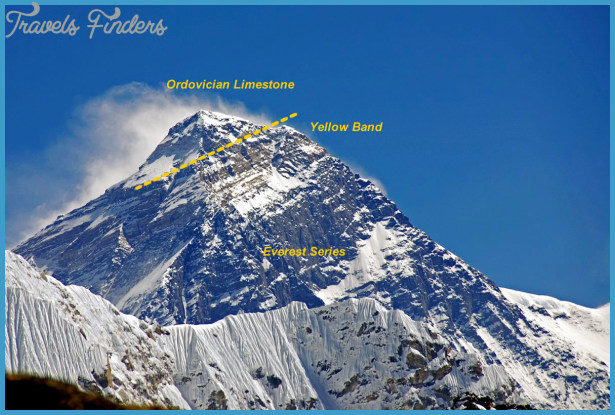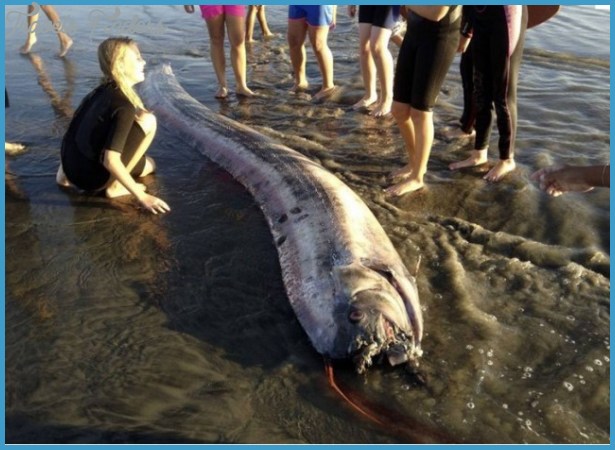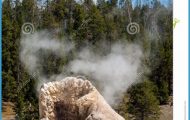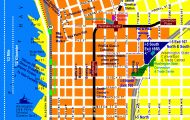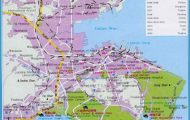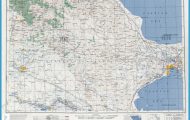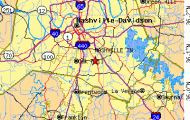The Beartooth Plateau is part of the large block of mountains, the Beartooth Range, which is about 75 miles long and 40 miles (120 by 65 km) across. The plateau was uplifted along nearly vertical faults and is mostly composed of very ancient granites and gneisses that are about 2.7 billion years old. When the uplift started about 50 million years ago, these ancient rocks were buried under about 12,000 feet (3660 m) of younger sedimentary rocks. These younger rocks have largely been eroded away but remain in a few areas, such as Beartooth Butte. The strata in the cliff face across Beartooth Lake include a lens-shaped reddish brown layer that is about a third of the way down from the top. The bright colored sediments were deposited in the brackish waters of a stream where it entered the ocean. Many fish fossils have been found in these sediments.
These were among the earliest fish on earth about 400 million years ago. Today, those fish are about 10,000 feet (3050 m) above sea level, thanks to the ride they got during the Beartooth Range uplift. Beartooth Butte is reflected in Beartooth Lake. A couple of miles (3 km) beyond Beartooth Lake, a gravel road goes north to reach the Clay Butte Forest Service lookout tower in about 2.5 miles (4 km). In July and August, visitors are welcome to enjoy the view and the panorama of mountain photographs on display in the small building at the top. Clay Butte is another remnant of sedimentary rocks similar to Beartooth Butte, but the fish fossil strata have been eroded away. Descending on the Beartooth Highway, you may notice the prominent white ledge across the wide valley from you. It extends for miles.
This is a 100-foot-high (30 m) cliff of Pilgrim Limestone, over 500 million years old a very tough sedimentary rock resistant to erosion. Other limestones and volcanic rocks lie above this layer. A short side road takes you to an excellent overlook for Pilot and Index peaks to the southwest. Glaciers carved both peaks out of volcanic rocks. Pilot, the pointed one, is a glacial horn; four glaciers carved its pyramidal shape. In this area, you’ll begin to see burned trees from the 1988 Clover-Mist fire that devastated much of the northeastern quadrant of Yellowstone. Waterfall enthusiasts should look for the lovely Lake Creek Falls on a bend of the old road that’s supported by well-preserved rockwork. It’s about 6 miles (10 km) west of the Clay Butte road. Look for a new bridge and a wide turnout north of the road to find it. About 14 miles (23 km) east of Cooke City is the junction with Wyoming Highway 296, the ChiefJoseph Highway. To continue to the Northeast Entrance, see The continuation of U.S. 212 to Cooke City on 196.

